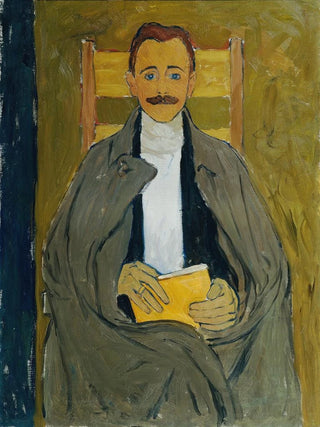Art print | Rudolf Steindl, brother-in-law of the artist - Koloman Moser


View from behind

Frame (optional)
Rudolf Steindl art print, brother-in-law of the artist - Koloman Moser – Captivating introduction
In the world of art, some works manage to transcend mere visuals to become witnesses of stories and human relationships. This is the case of the Rudolf Steindl art print, brother-in-law of the artist - Koloman Moser, which embodies not only the talent of its creator but also the family and friendly bonds that nourish creativity. This piece, beyond its aesthetic beauty, invites us to delve into the intimate universe of Moser, an emblematic artist of the Viennese movement, whose artistic vision left a mark on his era. Through this portrait, the artist offers us a glimpse of his personal life while providing an insight into his unique style.
Style and uniqueness of the work
Koloman Moser's style is distinguished by its elegance and ability to blend different artistic influences. In the Rudolf Steindl art print, one can observe a bold use of colors and shapes, typical of Art Nouveau. The flowing lines and organic motifs intertwine to create a visual harmony that immediately captures the eye. Moser, as a founding member of the Vienna Secession, always sought to push the boundaries of traditional art, and this work is no exception. The depiction of Steindl, with his serene expression and penetrating gaze, seems to capture not only his physical appearance but also his essence, his character. This portrait goes beyond simple representation; it becomes a dialogue between the artist and his model, an exchange that resonates through time.
The artist and his influence
Koloman Moser, born in 1868 in Vienna, played a major role in the development of modern art in Austria. As a designer, painter, and illustrator, he contributed to the emergence of new artistic currents that revolutionized the perception of art at the end of the 19th century. His collaboration with other artists, such as Gustav Klimt, helped create a fertile environment for innovation and experimentation. Moser managed to combine functionality and aesthetics, earning him international recognition. His influence continues to shape the artistic landscape today.

Matte finish

View from behind

Frame (optional)
Rudolf Steindl art print, brother-in-law of the artist - Koloman Moser – Captivating introduction
In the world of art, some works manage to transcend mere visuals to become witnesses of stories and human relationships. This is the case of the Rudolf Steindl art print, brother-in-law of the artist - Koloman Moser, which embodies not only the talent of its creator but also the family and friendly bonds that nourish creativity. This piece, beyond its aesthetic beauty, invites us to delve into the intimate universe of Moser, an emblematic artist of the Viennese movement, whose artistic vision left a mark on his era. Through this portrait, the artist offers us a glimpse of his personal life while providing an insight into his unique style.
Style and uniqueness of the work
Koloman Moser's style is distinguished by its elegance and ability to blend different artistic influences. In the Rudolf Steindl art print, one can observe a bold use of colors and shapes, typical of Art Nouveau. The flowing lines and organic motifs intertwine to create a visual harmony that immediately captures the eye. Moser, as a founding member of the Vienna Secession, always sought to push the boundaries of traditional art, and this work is no exception. The depiction of Steindl, with his serene expression and penetrating gaze, seems to capture not only his physical appearance but also his essence, his character. This portrait goes beyond simple representation; it becomes a dialogue between the artist and his model, an exchange that resonates through time.
The artist and his influence
Koloman Moser, born in 1868 in Vienna, played a major role in the development of modern art in Austria. As a designer, painter, and illustrator, he contributed to the emergence of new artistic currents that revolutionized the perception of art at the end of the 19th century. His collaboration with other artists, such as Gustav Klimt, helped create a fertile environment for innovation and experimentation. Moser managed to combine functionality and aesthetics, earning him international recognition. His influence continues to shape the artistic landscape today.






